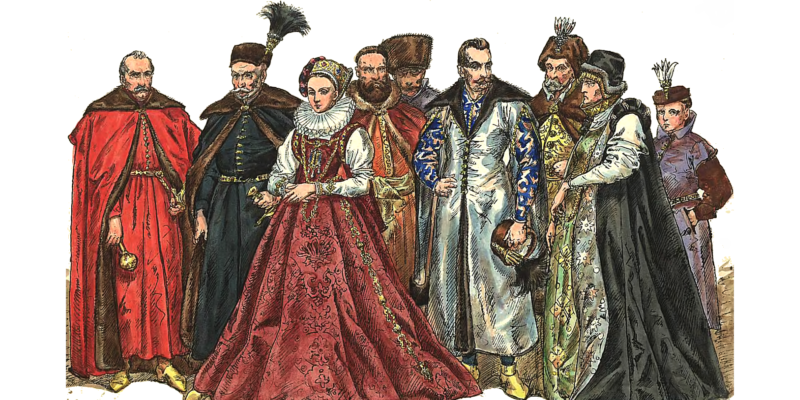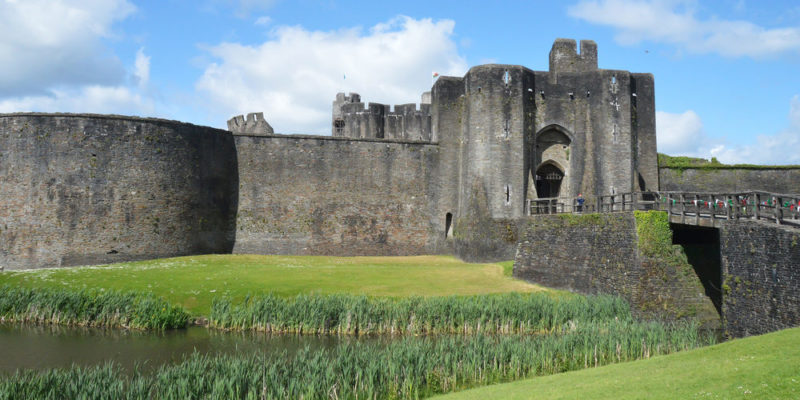We explain what feudalism is and how society was divided at that time. In addition, on what was its economy based and its characteristics
What was feudalism?
Feudalism was a system of political-social organization that was expanding from the end of the 9th century, throughout almost three centuries, in much of Western Europe .Feudalism also implied a model of economic organization that originates long before in Rome, when the colonato-patronage regime arose, so that the nobles kept their lands worked by slaves , who would begin to pay tribute.
The generation of wealth came basically from agriculture and the raising of animals , in charge of the servants of the gleba. In feudal society there was still no trade or industry , it was not a monetized system.
Characteristics of feudalism :
Social classes

The company was divided into three well-differentiated estates:
- Nobility. Members of the nobility, owners of large tracts of land, generally received in payment for their military efforts
- Clergy. He dealt with religious affairs, which by then dominated general human behavior
- Servants. Lower stratum and in charge of cultivating the lands and making them produce.
Castles and forts
 In order to have control over the work of the serfs, but more than anything to be alert against possible attacks from enemies , during feudalism a large number of castles were built in Europe.
In order to have control over the work of the serfs, but more than anything to be alert against possible attacks from enemies , during feudalism a large number of castles were built in Europe.It was typical that these castle-fortifications had a double wall (one exterior and one interior), and one or more towers , with interior courtyards and sometimes a peripheral moat. The castle was a base for military operations, as well as a home.
Economy
The generation of wealth came basically from agriculture and the raising of animals, in charge of the servants of the gleba. In feudal society there was still no trade or industry , it was not a monetized system.
Payment of taxes
 The serfs had to pay “in kind” (grain sacks, wine barrels, oil jars, livestock) the right to live on those lands, and the vassals, in turn, had to pay large rents , also generally in kind . These incomes can be considered taxes. Another kind of tribute was the tithe, originally a contribution to guarantee the maintenance of the clergy.
The serfs had to pay “in kind” (grain sacks, wine barrels, oil jars, livestock) the right to live on those lands, and the vassals, in turn, had to pay large rents , also generally in kind . These incomes can be considered taxes. Another kind of tribute was the tithe, originally a contribution to guarantee the maintenance of the clergy.
System closed
Feudalism was a closed economic and social system, with no possibility of class mobility (whoever was born a servant would die a servant) . Since the main support of the feudal system was the need to protect each other in a time of continuous invasions for the conquest of lands, once those became less frequent, many stopped feeling the need to be under the protection of a feudal lord .Little by little the 'burgos' emerged , small villages in which artisans and merchants practiced a free economy . And so the feudal system was giving up its place, allowing the birth of a new concept: that of the bourgeoisie .
Concentration of power
All powers (legal, economic and political) were in charge of the feudal lords and members of the clergy . The rest of the population had no say in the decisions.
Vassalage
 During that time it was common for obligations to be established between a free man, the “vassal”, and another free man, the “noble” . This included the commitment of obedience and service on the part of the vassal (mainly in military matter) and obligations of protection and maintenance on the part of the noble.
During that time it was common for obligations to be established between a free man, the “vassal”, and another free man, the “noble” . This included the commitment of obedience and service on the part of the vassal (mainly in military matter) and obligations of protection and maintenance on the part of the noble.In this way, it was common for nobles to grant their vassals in return the ownership of some fraction of their lands, which came to be called, precisely, "fiefdoms".
The vassals, in turn, had servants of the gleba , who were obliged to provide their work for free to produce these lands. A feudal lord with numerous vassals sometimes acquired as much or more power than the king himself.
Frequent wars
War was the only way of economic growth , since whoever won those wars kept the lands of the defeated; In this way he increased his endowment of serfs (assigned to the land itself) and his possibility of producing food and adding new vassals.
errant knight
 It is during the times of feudalism that the figure of the knight-errant (immortalized in the famous Don Quixote ) arises , as an essential force to be part of the hosts of the king or feudal lord, also to spread the Catholic faith in the world.
It is during the times of feudalism that the figure of the knight-errant (immortalized in the famous Don Quixote ) arises , as an essential force to be part of the hosts of the king or feudal lord, also to spread the Catholic faith in the world.
Central role of the Catholic Church
 Although at the top of the political-social structure was the king, often the authority of the kings was minimal and the true power was exercised by the Catholic Church . The rigid prevailing social order, which we today perceive as totally unjust and arbitrary, was supposed to emanate from God , therefore it was not questioned.
Although at the top of the political-social structure was the king, often the authority of the kings was minimal and the true power was exercised by the Catholic Church . The rigid prevailing social order, which we today perceive as totally unjust and arbitrary, was supposed to emanate from God , therefore it was not questioned.The above content published at Collaborative Research Group is for informational and educational purposes only and has been developed by referring reliable sources and recommendations from technology experts. We do not have any contact with official entities nor do we intend to replace the information that they emit.
MA student of the TransAtlantic Masters program at UNC-Chapel Hill. Political Science with a focus on European Studies. Expressed ideas are open to revision. He not only covers Technical articles but also has skills in the fields of SEO, graphics, web development and coding. .
Leave a reply
Your email address will not be published. Required fields are marked *Recent post

Sport: What Is It, Types, Risks, Features, Characteristics and Examples
September 23, 2021

Dogs: Emergence, Features, Characteristics, Feeding and Breeds
September 24, 2021

Story: Definition, Elements, Structure, Features and Characteristics
September 24, 2021

Essay: Definition, Structure, Features, Characteristics, How to Do It
September 24, 2021
